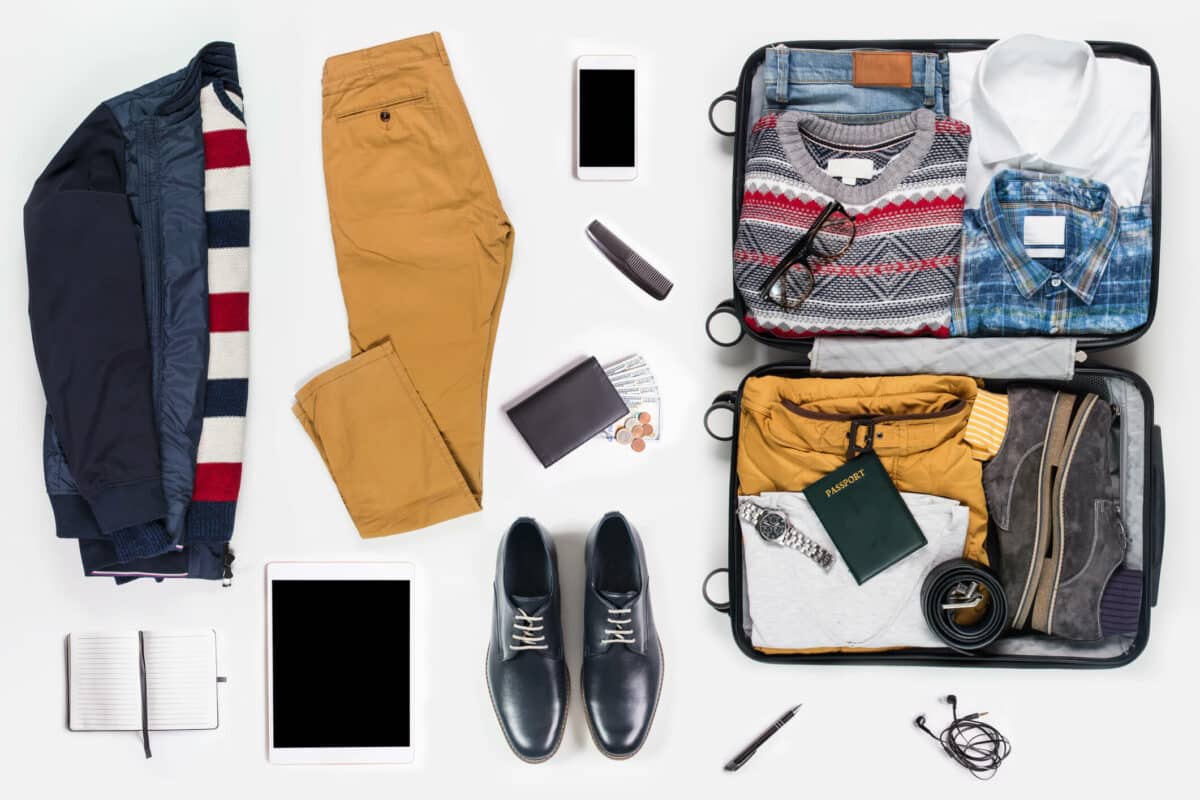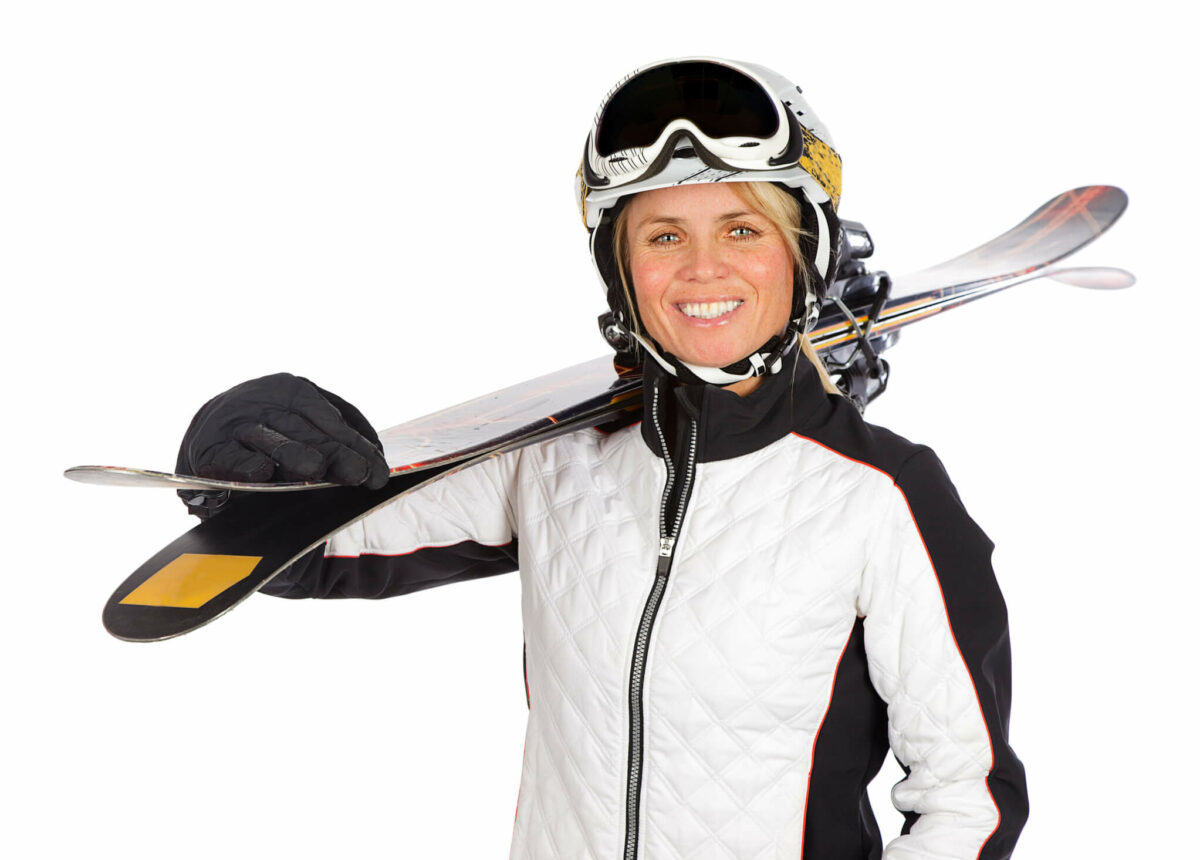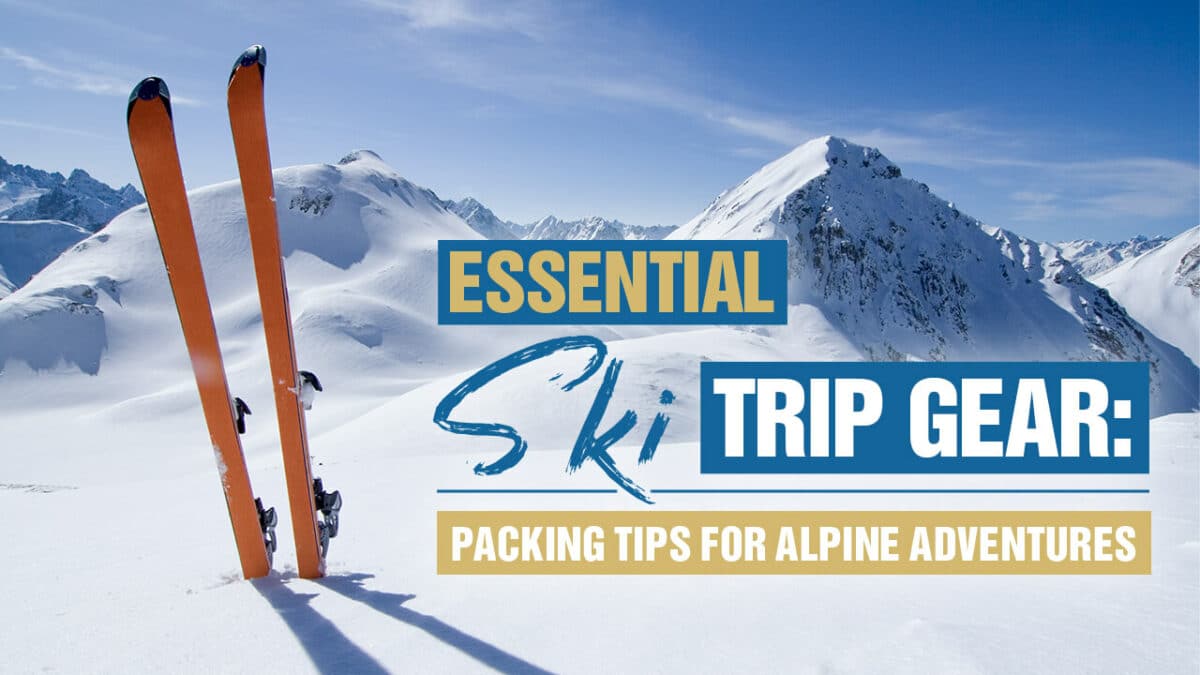There is a lot of paraphernalia associated with skiing. You can see this when you’re walking around Geneva Airport, as there are many people dragging heavy suitcases to their resort transfers. Some people like to travel with enough stuff for every eventuality but overload themselves. While there is essential ski trip gear, if you pack smartly, you can travel much more easily while having everything you need.
In this article, we will run through essential ski trip gear to ensure comfort and convenience during your trip to the French Alps.
Pack The Right Clothing
Let’s start with what clothing you need to pack, as what you wear makes a huge difference to your comfort.
Base Layers: Your base layer is just as important as your jacket and pants. Technical thermal underwear made from merino wool or synthetic fibres helps your body regulate its temperature on the mountain.
Mid Layers: Your mid-layer can be a hoodie over a T-shirt, a down jacket, or an additional technical layer. It all depends on the temperature and how you feel the cold, so getting this right may take some trial and error if you’re new to mountain life. But you can always buy new clothes at your ski resort’s many ski and snowboard shops.
Outer Layer: Your jacket and pants make up your outer layer. They should be waterproof, breathable, and windproof. Depending on your skiing style and required comfort level, you can choose outer layers with different protection and insulation levels.
Proper Gloves: Your hands must stay dry and warm all day on the mountain; therefore, buy some decent ski gloves. If you are a snowboarder, you’ll need snowboard-specific gloves that are tougher and more waterproof than ski gloves. You may even want additional gloves to wear around the resort in the evenings and for throwing snowballs with the kids.
Ski Socks: Your socks are your first point of contact with your skis, so ensure you have some quality ones. Don’t wear woollen hiking socks; they will rub and cause painful blisters, which can ruin your holiday. Ski socks are made from technical materials that reduce friction and warm your feet
Neck Gaiter or Balaclava: Pack something to cover your face on the mountain. A neck gaiter, balaclava, or buff comes in handy when the weather closes in, and it protects your face from the sun.
Clothing For The Evenings: You’ll undoubtedly want to eat and drink in the evenings, but remember that the temperatures drop dramatically. Therefore, you must pack warm clothes for the stagger back to the chalet at night. Unfortunately, ski jackets go missing from bars, often with expensive lift passes and other valuables in the pockets. With this in mind, it’s best to take an additional jacket to wear at night.
Appropriate Footwear: Ski resorts are snowy and slippery places, especially pedestrianised ones like Avoriaz. Therefore, you should pack snow boots or something similar, as high heels and tennis shoes won’t cut it.

Looking After Yourself
There are a few items that will make you more comfortable and safer and allow you to enjoy your skiing trip more:
Eye Protection: You should always wear sunglasses or goggles when skiing. They protect your eyes from bad weather, ice, snow, and snow blindness. Sunglasses are more lightweight, but goggles provide more coverage and protection.
Helmet: Not many people ski or snowboard without a helmet these days. If you have one, make sure you pack it. However, this is something you can hire or buy in the resort when you arrive.
Sun Protection: The sun is incredibly strong in the mountains as it reflects off the snow, and the higher altitude makes a difference. Therefore, sun protection is essential, even on an overcast day. Pack plenty of sun cream and lip balm to protect your skin. Also, sun cream reduces your chances of getting a goggle tan and looking like a panda.
Optional Items For Your Suitcase
Some items can make your trip to the mountains more pleasurable and more straightforward; here are a few optional items to pack:
Portable Boot Dryer: Your ski or snowboard boots can get wet depending on the weather and snow conditions. However, using a portable boot dryer, you can ensure they are dry and warm in the morning. Plug them in to dry overnight and again while eating breakfast for toasty toes.
Ski And Snowboard Equipment: Bring your own ski and snowboard equipment if you have it. But don’t worry if you don’t, as you can book hire equipment to be waiting for you when you arrive. Please ask our travel experts about equipment hire when you book. We only recommend the best hire shops that provide quality equipment for all levels and styles.
Ski Lock: Ski and snowboard equipment go missing from time to time. Sometimes, a fellow skier will pick up your skis from outside a bar or restaurant in an honest mistake, but there are thieves around, too. You can use a ski lock to ensure your stuff doesn’t go missing. These simple combination cable locks can prevent your day from being ruined and a lot of agro. Alternatively, you can use a cheap bike lock if it passes through your bindings.
Hand and Toe Warmers: In some high-altitude ski resorts, the temperatures can be well below zero, so hand and toe warmers can help you. These are useful if you’re not used to the cold or feel it easily.
Camera Equipment: Documenting your trip helps you to remember it in years to come. So, remember to pack your camera or GoPro with all the necessary mounts.

Final Thoughts
This may seem like a lot of stuff to carry, but with some thought, you can reduce the weight of your suitcases. Hopefully, you’ll also have some space for souvenirs and treats to take home.
You can buy most of these things at the ski resort, so don’t worry too much about forgetting anything. If you have any questions, don’t hesitate to contact our travel experts, as they will be able to help you with their extensive knowledge and experience.

